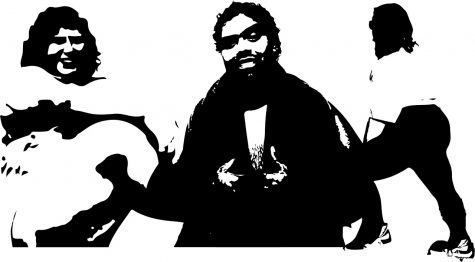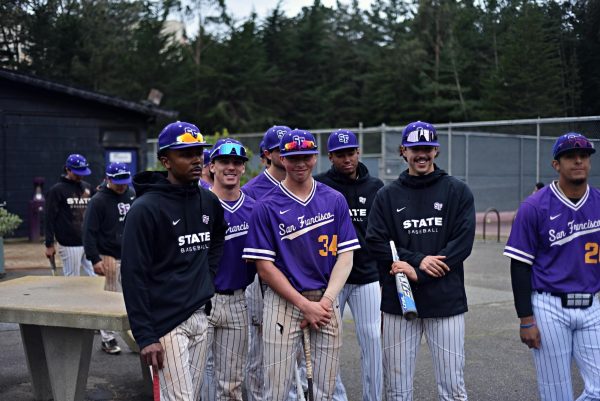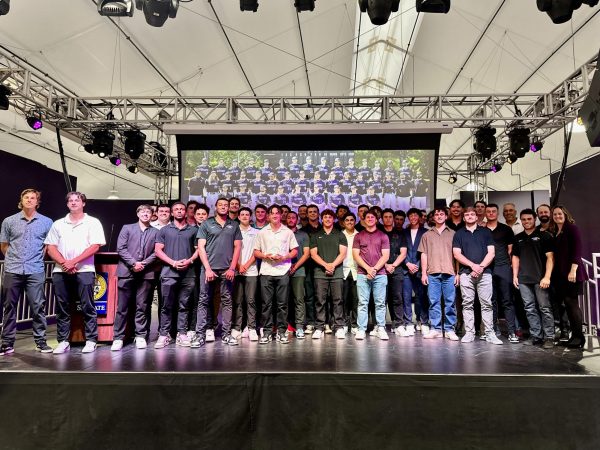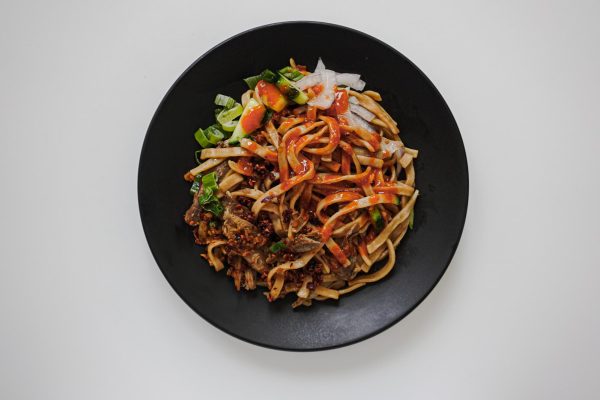The alienation of plus-size bodies
February 25, 2020

As summer approaches, companies — specifically fashion ones — will begin rolling out their summer items for consumers. What was once an anxiety-inducing season for many became less menacing after companies slowly accepted and integrated plus-size clothing into their stores.
Now, “stores” would imply that plus-size bodies would be able to walk into a physical store and try on clothes which, of course, isn’t the case everywhere. In 2016, H&M removed the plus-size section in 11 of their New York stores, making the section available only online. After an 11-year removal of the plus-size section from stores, Old Navy restored the section in 75 of its stores.
According to Statista, the estimated market value in the U.S. for plus-size women’s apparel in 2018 was $22.8 billion. If the market for plus-size bodies is so big, why are companies missing the mark? Where are they losing the consumers?
Most of it has to do with the retailers themselves and their own outlook on plus-size bodies. Not all plus-size bodies are the same so solutions that retailers come up with cannot be a one-size-fits-all either.
“Especially when talking about the fashion industry … there’s kind of a range of what plus-size is, but it’s not concrete,” said Andy Dal Canto, a curvy BECA major at SF State. “Nothing within fashion sizing is concrete. I see brands that call an 8 or a 10 plus-size and I’m like ‘that’s not plus-size.’”
According to a 2016 study published in the International Journal of Fashion Design, Technology and Education, the average American woman’s size is between a 16-18 which translates to a woman’s plus-size, 20W. Even when retailers add in massive amounts of plus-size clothing to their stores, it shows that straight sizes are preferred.
While Target admittedly got better at including plus-size clothes and mannequins in its stores, there is still some disconnect between plus-size bodies, companies and actual representation for those with bigger bodies. Target’s fashion Instagram, Target Style, posts photos of not only real people wearing their clothes but also any new releases Target has that pertains to fashion, accessories and beauty.
On Feb. 12, the Instagram account posted a plus-size woman wearing a two-piece bikini. It was beautiful and as a plus-size woman who still has body issues, I felt seen. It wasn’t until I began scrolling under the photo’s comments that I saw a disconnect between the company and those it’s trying to sell this bikini to.
“Since this is a plus size woman wearing a plus sized suit can you please link it to the plus sized suit on the website? This is a really crappy thing that you do,” said one Instagram user. “Every single time you use a fat or a plus sized body for marketing, I click on the link and it takes me to the non plus sized version of the clothing. And then I have to do a seperate search on the website to find it in my size. Completely unacceptable!”
One of the biggest problems with the fashion industry is that they add in plus-size clothes, not even for money anymore, but to quiet bigger bodies. Even when Target has a plus-size model, wearing plus-size clothing, they link it to a straight size.
Lea Williams, a plus-size Bay Area woman, said it is difficult to find clothes for herself in stores that aren’t Forever21 or specifically made for plus-size women.
“I’m thankful for online stores that have wide varieties because I love bold everything and over the last few years, clothing companies have really reinvented their plus size sections,” said Williams. “I will say that shopping for jeans has been the worst. Because I have the height and the curves it’s hard finding curvy jeans that go to my ankles … sometimes even curvy jeans in general. Sometimes I have really great shopping days and other days, nothing fits.”
While the fashion industry is to blame for many people’s self-confidence issues and eating disorders (seriously, Google search “eating disorders fashion industry”), it can’t be blamed for everything. This idea of ignoring larger bodies depends on culture and the identities behind those bodies.
Rose Gelfand, a queer, white Jewish fat femme from the Bay Area, attends Scripps College in Claremont, CA. She is currently studying abroad in Spain and admits that she has confronted more fatphobic comments out there than back at her college.
“I’ve had multiple times where people have been like ‘isn’t it so great that obesity isn’t a problem in Spain, like isn’t that amazing?’,” said Gelfand. “It’s mind blowing to me that people can just say that and think it’s okay.”
Many people see bigger bodies and think of the countless stereotypes that society has allowed them to believe—some may see a lazy person, others may see someone who is unhealthy and glorifying obesity. However, it hasn’t always been like this.
“Back in the old days, if you were a plus-size person, you were considered rich because you had access to food and body size back then represented wealth, it represented power and royalty,” said Herman Kila, a Polynesian plus-size cosplayer who lives in Hawaii. There is still an identity that Kila possesses which prevents him from truly feeling accepted for his size.
“The thing is, whenever men talk about this—whether we talk about mental health or body image issues, either one of two things will happen; we are ignored or we are laughed at. It’s just sad that all the way around, men can’t talk about this,” said Kila.
In order to get to a place where men and anyone else for that matter can talk about this, cultural changes need to be made in terms of how we view bodies and body image as a society. Commercial industries can play a significant role in creating fads and swaying public opinion therefore change needs to start in places like the fashion industry to trickle down into everyday life.
Until then, don’t beat yourself up if you are still struggling with self-confidence or body issues. Building that confidence and self-acceptance takes time. You will have days where you can look at yourself and feel nothing but love and happiness. Other days, all you will want to do is wrap yourself up in a blanket and be by yourself.
Following Instagram accounts that make you feel good about yourself and unfollow those that don’t. Since following plus-size and fat people on Instagram, not only did I feel better about my own body but I also got to see that the problems I deal with daily as a plus-size woman aren’t as uncommon as I once thought.
SF State’s Counseling and Psychological Services is providing a Body Positive Support Group during the Spring 2020 semester. According to the website, the support group “helps students explore feelings about their body image” and is open to all female identified students that are currently affiliated with SF State. The group meets every Friday from 10 a.m. to 12 p.m. and will last from Feb. 14 to March 13.











